Abstract
In the presence and absence of white noise, response-independent aversive events were delivered to rats according to several variable-time electric-shock schedules. The animals could switch from the noise component to the no-noise component and vice versa by making a single lever-press response. If the schedule in one component was not in operation when the animal was in the other component, the proportion of time allocated to one component equalled or matched the proportion of obtained punishers in the other component. If both schedules were always in operation, minimizing tended to occur: the animals allocated almost all of their time to the component having the lower shock rate. An analysis of these results, in terms of the expected time until an aversive event, is presented.
Keywords: choice, time allocation, punishment, matching law, lever press, rats
Full text
PDF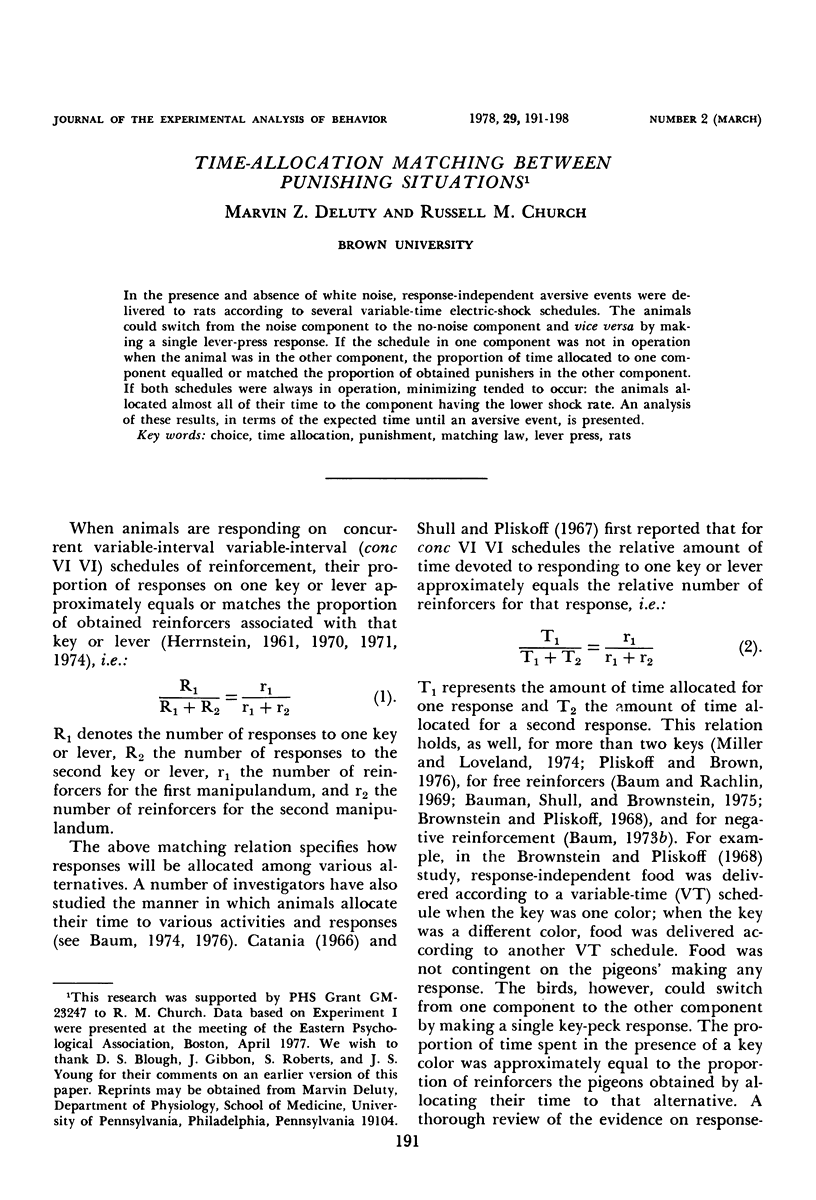
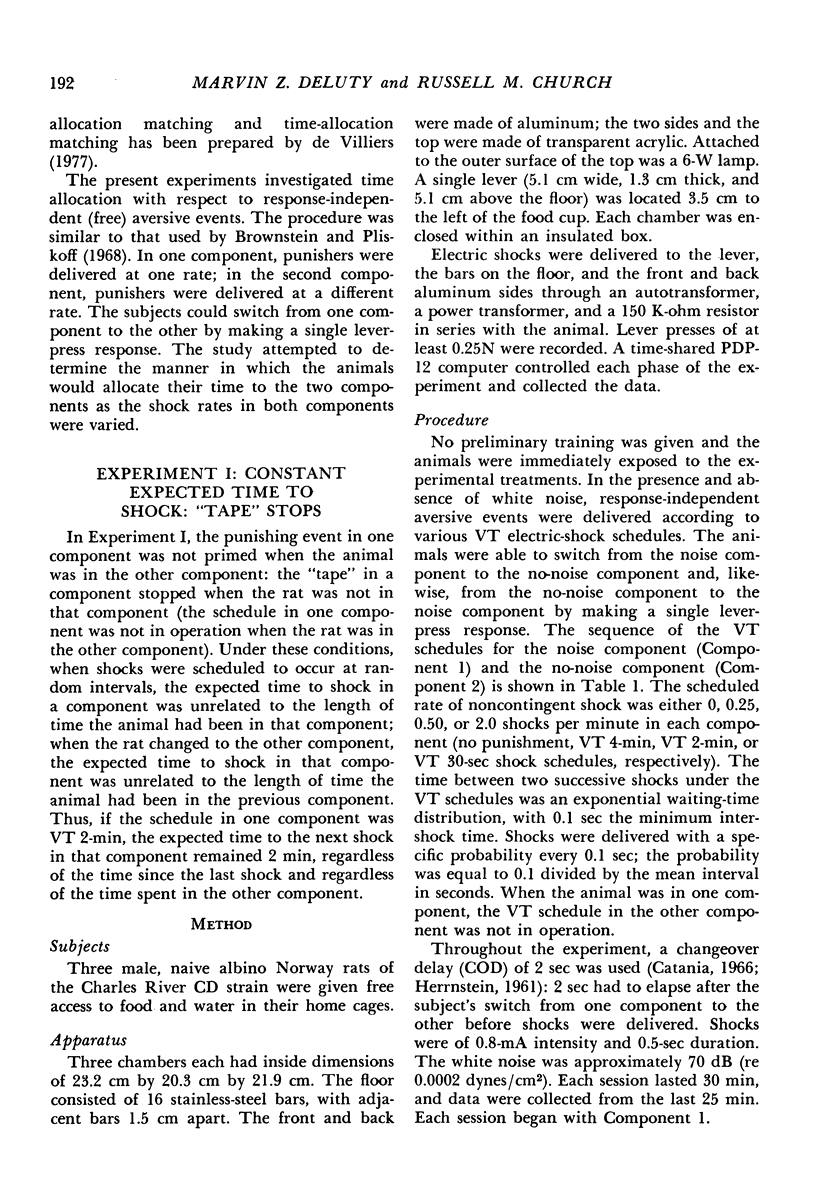
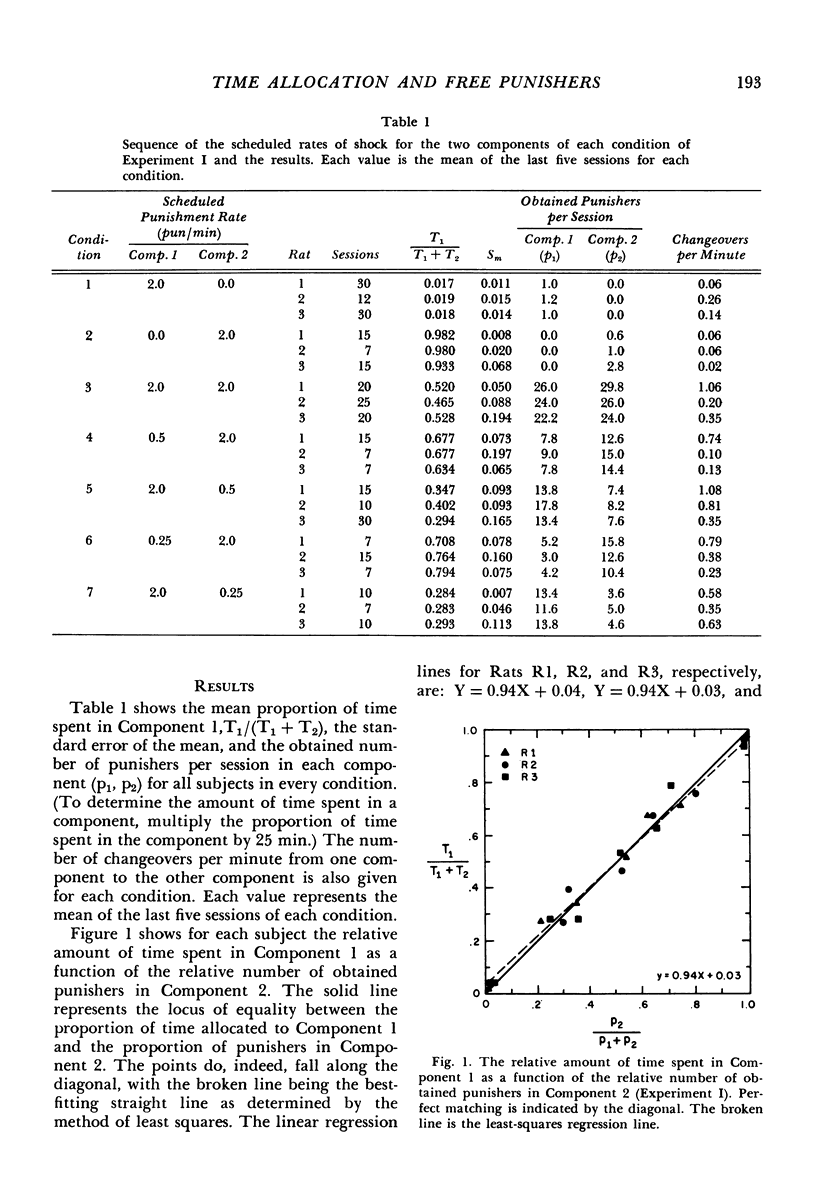
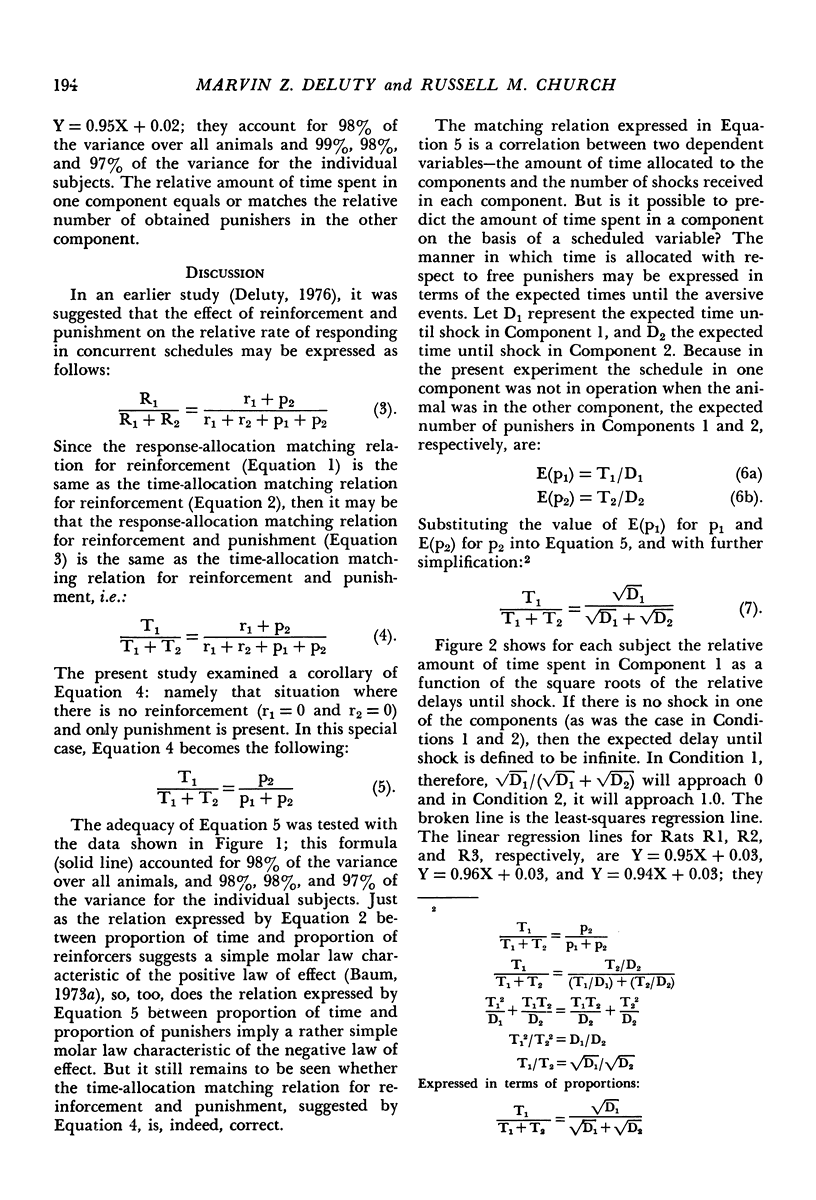
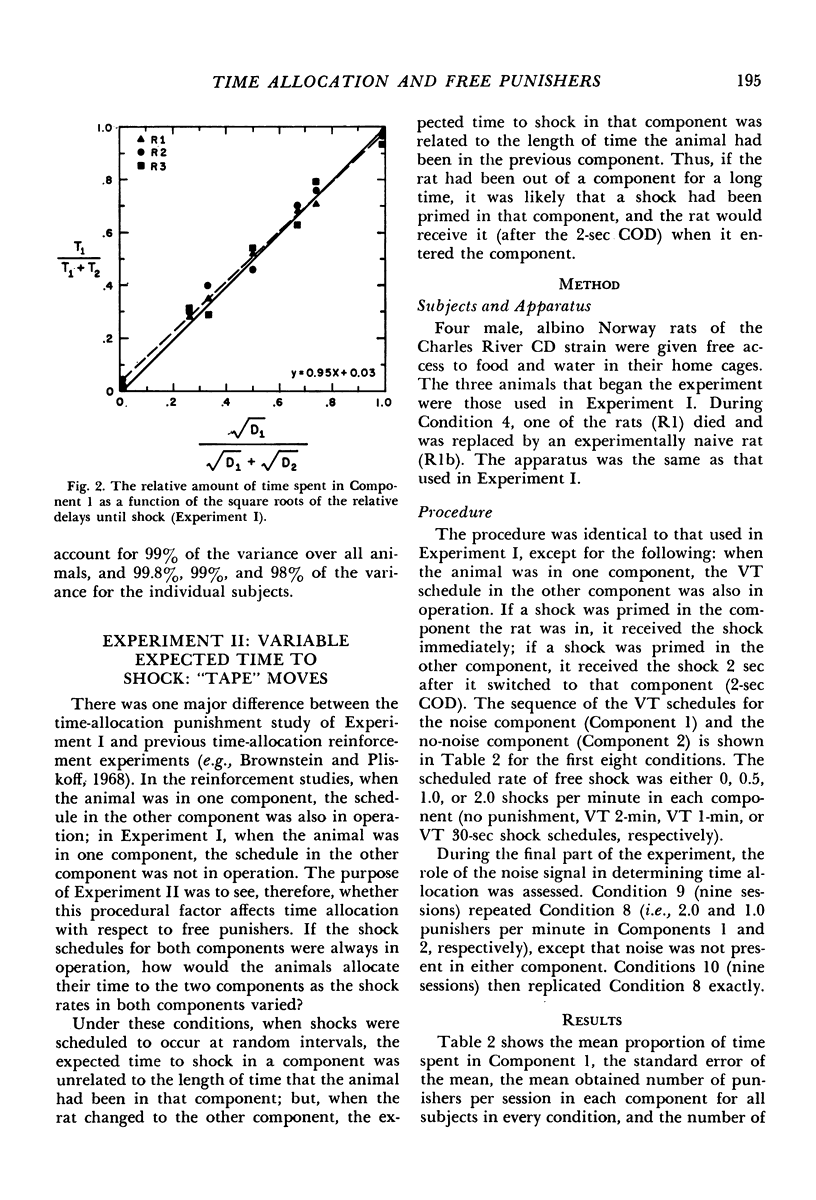
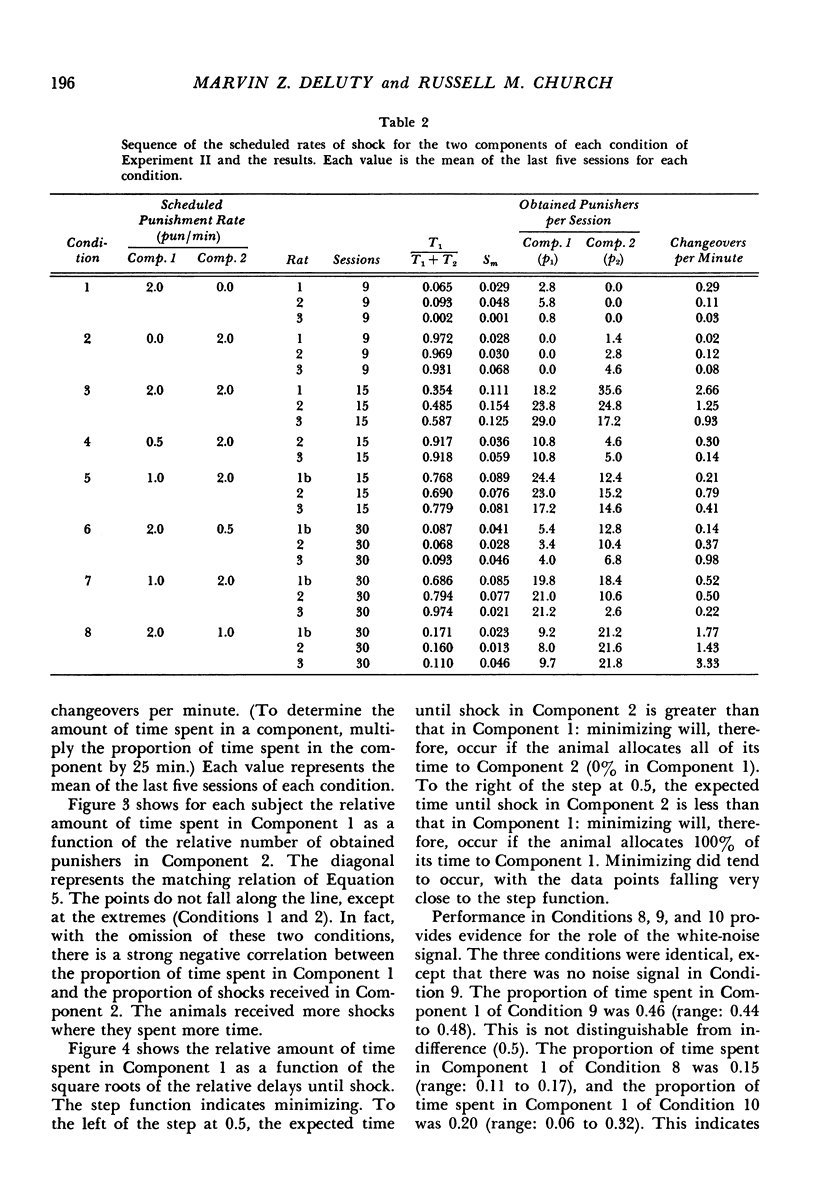
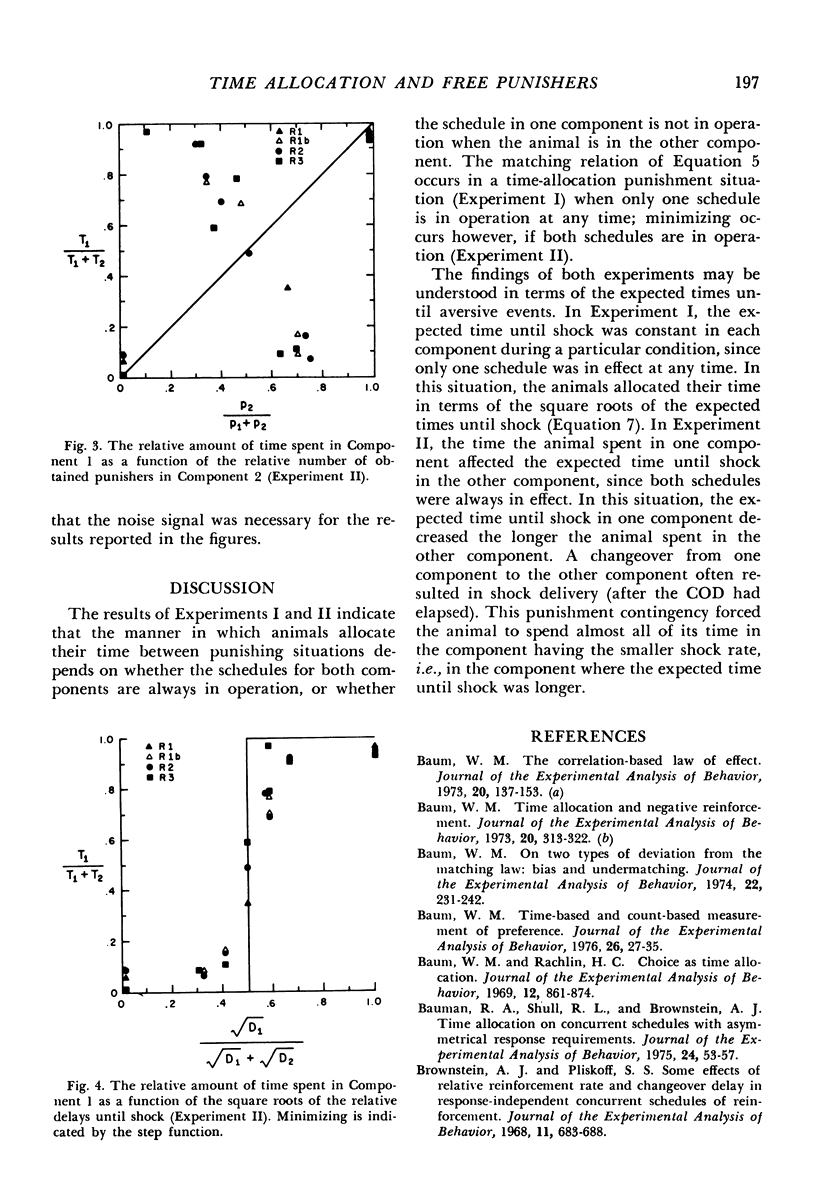
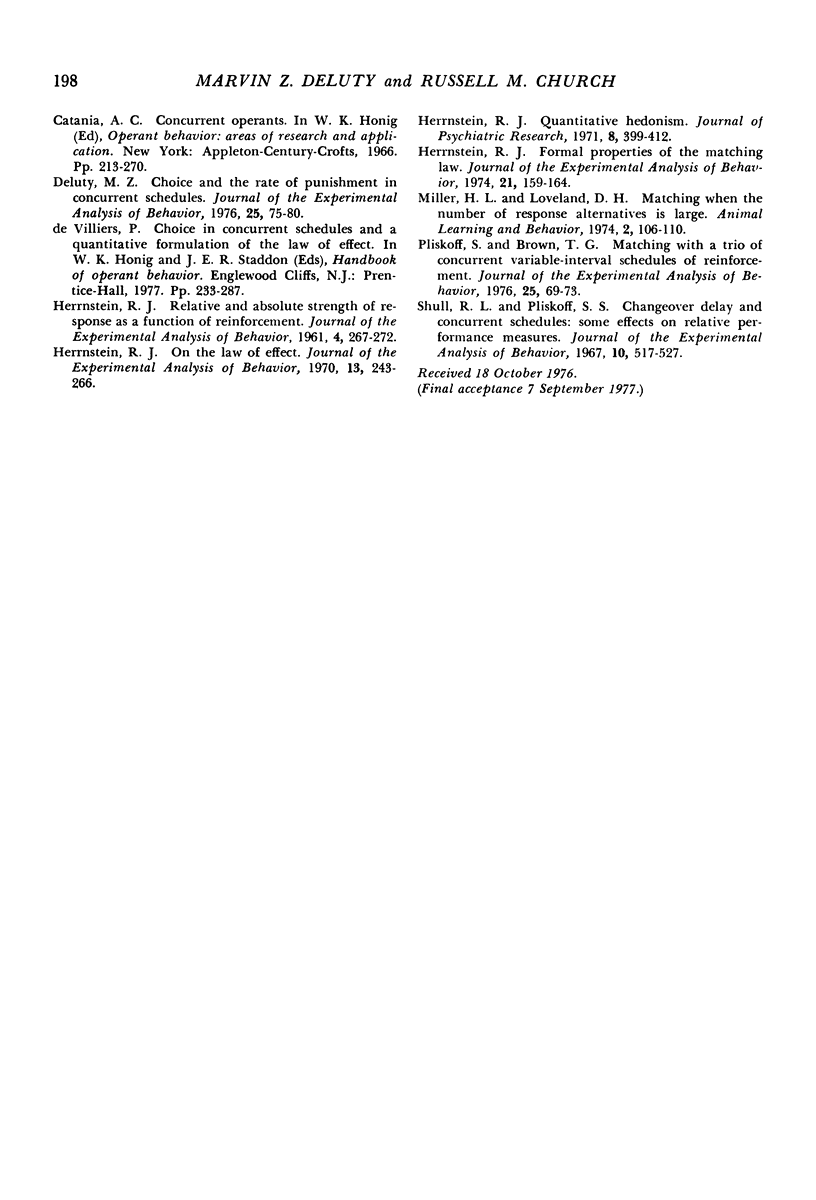
Selected References
These references are in PubMed. This may not be the complete list of references from this article.
- Baum W. M. On two types of deviation from the matching law: bias and undermatching. J Exp Anal Behav. 1974 Jul;22(1):231–242. doi: 10.1901/jeab.1974.22-231. [DOI] [PMC free article] [PubMed] [Google Scholar]
- Baum W. M., Rachlin H. C. Choice as time allocation. J Exp Anal Behav. 1969 Nov;12(6):861–874. doi: 10.1901/jeab.1969.12-861. [DOI] [PMC free article] [PubMed] [Google Scholar]
- Baum W. M. Time-based and count-based measurement of preference. J Exp Anal Behav. 1976 Jul;26(1):27–35. doi: 10.1901/jeab.1976.26-27. [DOI] [PMC free article] [PubMed] [Google Scholar]
- Bauman R. A., Shull R. L., Brownstein A. J. Time allocation on concurrent schedules with asymmetrical response requirements. J Exp Anal Behav. 1975 Jul;24(1):53–57. doi: 10.1901/jeab.1975.24-53. [DOI] [PMC free article] [PubMed] [Google Scholar]
- Brownstein A. J., Pliskoff S. S. Some effects of relative reinforcement rate and changeover delay in response-independent concurrent schedules of reinforcement. J Exp Anal Behav. 1968 Nov;11(6):683–688. doi: 10.1901/jeab.1968.11-683. [DOI] [PMC free article] [PubMed] [Google Scholar]
- Deluty M. Z. Choice and the rate of punishment in concurrent schedules. J Exp Anal Behav. 1976 Jan;25(1):75–80. doi: 10.1901/jeab.1976.25-75. [DOI] [PMC free article] [PubMed] [Google Scholar]
- HERRNSTEIN R. J. Relative and absolute strength of response as a function of frequency of reinforcement. J Exp Anal Behav. 1961 Jul;4:267–272. doi: 10.1901/jeab.1961.4-267. [DOI] [PMC free article] [PubMed] [Google Scholar]
- Herrnstein R. J. Formal properties of the matching law. J Exp Anal Behav. 1974 Jan;21(1):159–164. doi: 10.1901/jeab.1974.21-159. [DOI] [PMC free article] [PubMed] [Google Scholar]
- Herrnstein R. J. On the law of effect. J Exp Anal Behav. 1970 Mar;13(2):243–266. doi: 10.1901/jeab.1970.13-243. [DOI] [PMC free article] [PubMed] [Google Scholar]
- Herrnstein R. J. Quantitative hedonism. J Psychiatr Res. 1971 Aug;8(3):399–412. doi: 10.1016/0022-3956(71)90033-1. [DOI] [PubMed] [Google Scholar]
- Pliskoff S. S., Brown T. G. Matching with a trio of concurrent variable-interval schedules of reinforcement. J Exp Anal Behav. 1976 Jan;25(1):69–73. doi: 10.1901/jeab.1976.25-69. [DOI] [PMC free article] [PubMed] [Google Scholar]
- Shull R. L., Pliskoff S. S. Changeover delay and concurrent schedules: some effects on relative performance measures. J Exp Anal Behav. 1967 Nov;10(6):517–527. doi: 10.1901/jeab.1967.10-517. [DOI] [PMC free article] [PubMed] [Google Scholar]


